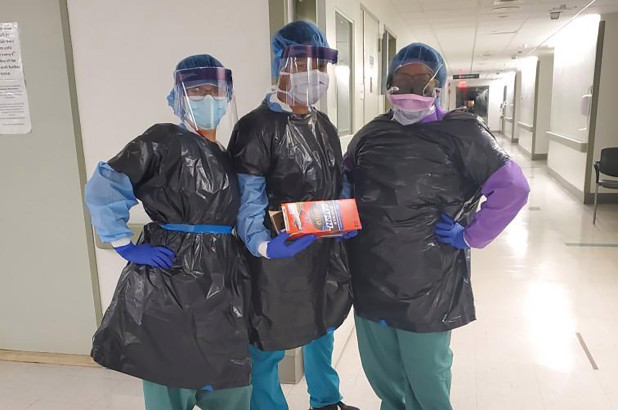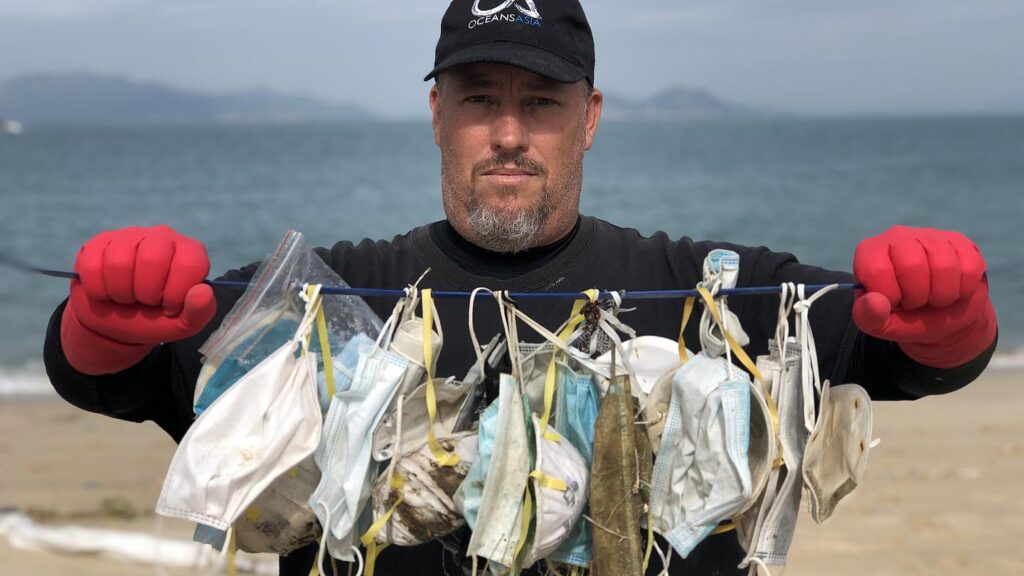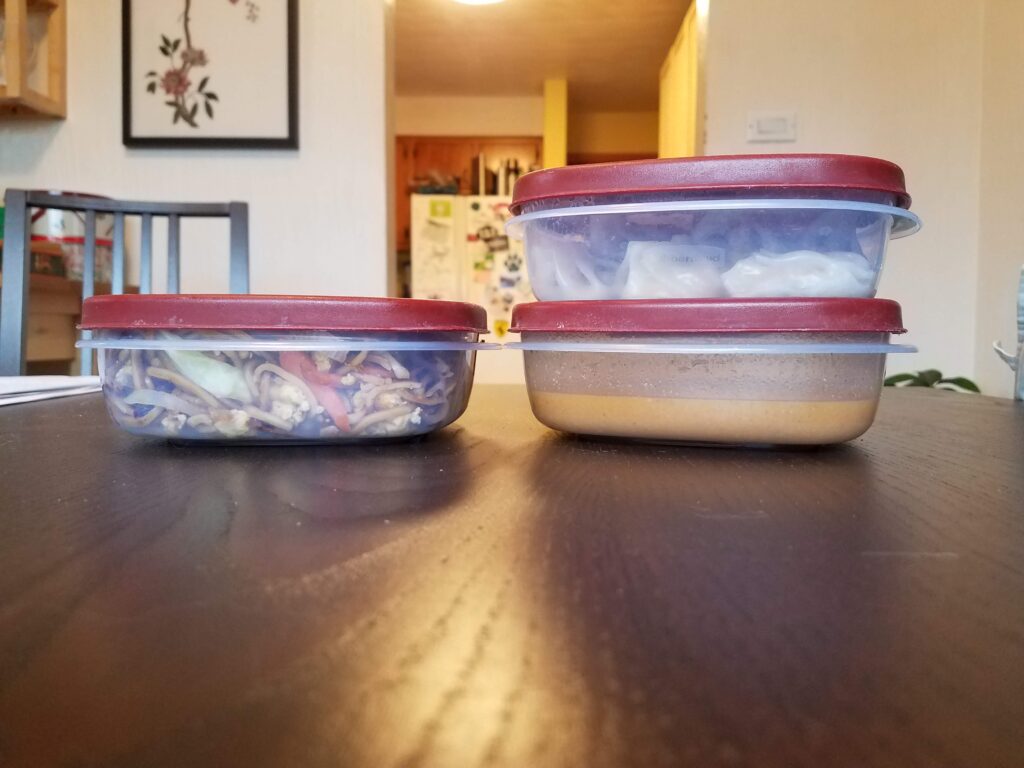Part 1 – Setting the Stage
It is July once again, already, making me very sad to see the summer fly by so quickly. But, being July, it is my intention to revive a challenge I gave myself this time last year: to participate in Plastic Free July.[1] Last year was my first time trying this challenge, but since I was fresh off of my Zero-Waste Lent adventure,[2] still holding onto good habits that already focused on eliminating consumption of common plastic packaging and takeout items (such as single-use bags, bottles, straws, and coffee cups), I was able to focus my attention on going completely plastic free.[3] This decision impacted my gardening, my bird-feeding, and my cat-momming, but I made it through with some creative solutions and only eight individual pieces of plastic for the entire month, which I considered to be a huge win, especially with a camping trip involved.[4]
Why do we need to care right now?
Of course, 2020 has presented a new set of challenges that – between a global pandemic and subsequent economic downturn – necessitate increased use of cheap, one-time items and no-contact transactions. Many of these products relate to healthcare, and I am not going to critique anything that doctors and nurses on the front lines are doing, nor will I attempt to imply that I have any kind of knowledge that surpasses theirs with respect to precautionary measures related to the virus. That being said, while I’m not going to suggest any changes in healthcare practices, I will note that because of the pandemic, our demand for plastic is soaring, and personal protective equipment (PPE) is a huge component of that increased demand.

According to an article from The Economist,[6] consumption of single-use plastics in the US may have grown as much as 250-300% as a result of the pandemic. As we are confined to our homes, shopping online rather than in stores means more plastic packaging to deliver our purchases to our homes. Takeout and delivery rather than eating at restaurants means more plastic to-go containers. As an indication of how much more delivery we’re getting, Uber Eats reported a 54% increase in first quarter sales, in a year-over-year comparison.
On top of that, social distancing and quarantine lock-downs have contributed to a crashing oil price. In April, oil futures went negative for the first time in history,[7] meaning companies had to pay traders to take it. Cheap oil means cheap plastic production, and if plastic is cheap enough to produce, there is less of an incentive to recycle it. Some plastic recycling programs have been shut down entirely because they’re not cost effective, and in other cases, increased social distancing guidelines have led to drops in frequency of garbage/recycling pickups and the number of garbage/recycling bins allowed per pickup (like in our neighborhood).
Unexpected Challenges
I’m heading into July knowing that some of my easy wins from last year will no longer be available to me this year. A couple things come to mind right off the bat, and they’re tied to the service industry, particularly related to food. I’ve had an incredibly useful kit of reusable items that I put together for Zero-Waste Lent last year,[8] but I can’t even use it now because of the level of reduced contact that is necessary for us to protect each other.

For example, Christian and I used to frequent an amazing restaurant owned by a couple we are now pleased to call friends. (By “frequent,” I mean two or three times a week – their food was that good.) I was spoiled to the point that they would even let me bring my own Tupperware for to-go orders, and they would fill my containers so I wouldn’t have to use Styrofoam clam-shells. I explained to them that Styrofoam was bad for the environment, and while they understood and wanted to accommodate me, I’m sure that the price point of various to-go containers was the deciding factor in why they continued to purchase Styrofoam.
(The good news is they actually sold their booming business in February, right before the virus hit hard. I don’t know how the new owner is doing in the current climate, but we haven’t been back.) Understanding that this is probably the worst possible time to own a restaurant, Christian and I have been trying to support local establishments to the best of our ability during quarantine, but it’s also hard for me to do that when I know that reusable food containers are most certainly not an option, and the food will show up in a stack of Styrofoam clam-shells, inside a plastic bag.

In this time when businesses all over the country are struggling, I fully recognize my place of privilege in asking them to invest in more expensive, environmentally-friendly to-go items when they’re likely having trouble making payroll. And again, here is where we arrive at the part of sustainability that forces us to recognize that every decision involves trade-offs. Choosing a long-term, climate-protective course of action on one hand can have immediate, negative impacts on local businesses. If I participate in Plastic-Free July, I am making a choice not to patronize local businesses that may not be able to afford eco-friendly packaging, and – through no fault of their own – cannot allow me to eat in their restaurant or use my own Tupperware to circumvent the need for that packaging in the first place.
Month to Date
Over the course of this month, I will keep track of any purchases that involve plastics and, like in Zero-Waste Lent, I will carry those items with me, for the purposes of public shaming. As of the writing of this post, I am off to a good start with zero plastic, but I know that grocery shopping in the coming week will prove tricky. Stay tuned for updates and wish me luck.
~
Have you done Plastic Free July in the past or are you considering doing it now? What were/are your biggest areas of difficulty? I’d love to hear your stories below.
Thanks for reading!
[1] https://www.plasticfreejuly.org/
[2] https://radicalmoderate.online/zero-waste-lent-ground-rules/
[3] https://radicalmoderate.online/plastic-free-july/
[4] https://radicalmoderate.online/medieval-gatorade-a-plastic-free-july-recap/
[5] https://nypost.com/2020/03/25/as-basic-supplies-run-perilously-short-hospitals-need-everyones-help-now/
[6] https://www.economist.com/international/2020/06/22/covid-19-has-led-to-a-pandemic-of-plastic-pollution
[7] https://www.forbes.com/sites/sarahhansen/2020/04/21/heres-what-negative-oil-prices-really-mean/#3eb077d45a85
[8] https://radicalmoderate.online/zero-waste-lent-week-1-food/
[9] https://www.euronews.com/2020/05/12/will-plastic-pollution-get-worse-after-the-covid-19-pandemic
0 Comments